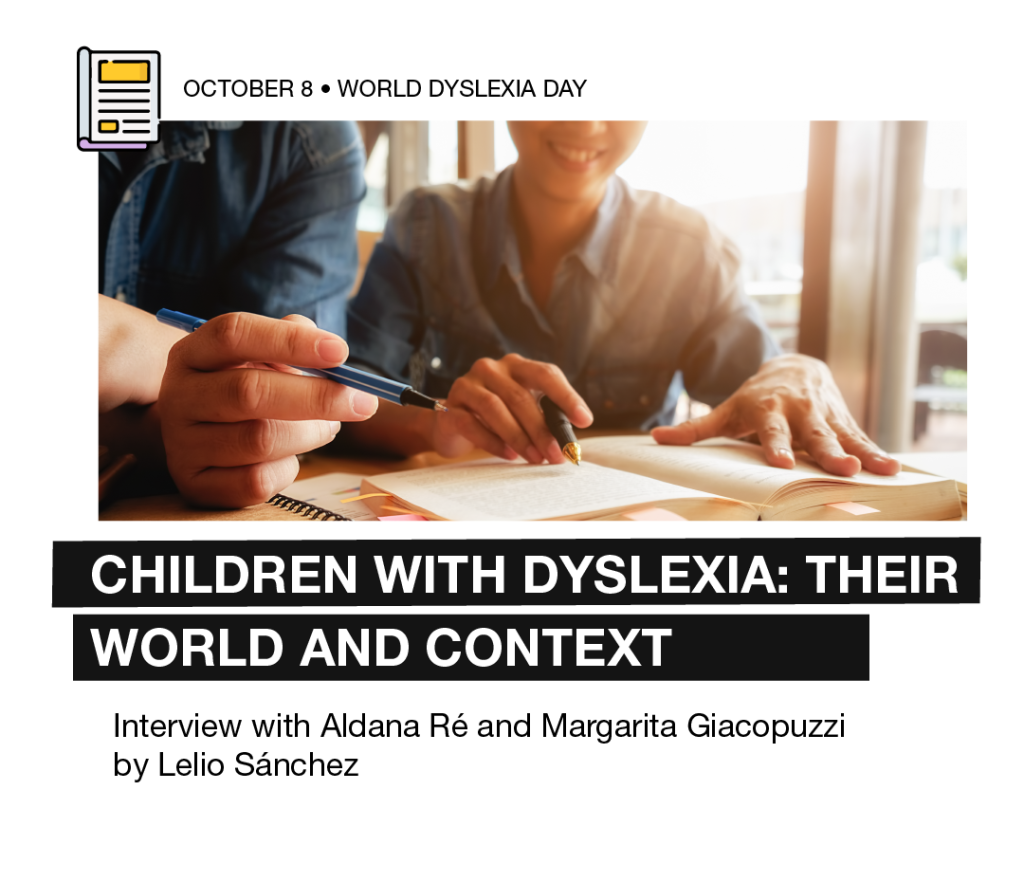10% of children live with dyslexia in the world
Dyslexia is an inherited neurobiological learning-specific disorder that affects 10% of the world population, according to the World Health Organization (WHO).
On October 8, we celebrate the World Dyslexia Day to raise awareness on people about this disorder. This date was officially recognized by the European Dyslexia Association and proposed by several associations addressing this topic.
Fundación Comparlante talked with Aldana Ré and Margarita Giacopuzzi, graduated in Psychopedagogy, Specialists in learning neuropsychology, Founders and therapists of Cenea Team (Centro de Neuropsicología del aprendizaje – La Plata, Argentina).
How is dyslexia addressed from the learning neuropsychological point of view?
The learning specific challenge known as Dyslexia is addressed form neuropsychology considering the cognitive skills that take part of the reading and writing process.
Neuropsychology understands that to read and write developing specific language skills such as the phonological awareness, which is understood as an ongoing development that evolves to discrimination, is required; another primary skill is the audio verbal memory, i.e., the ability to remember what has been heard, and the ability to name objects.
Visuoperceptual aspects such as the left right directionality, attention processes and behavioral modulation are also involved.
How do you work in educational environment?
We work together with teachers and school guidance teams by identifying strengths and weaknesses the student has in order to design a strategy.
The school implements a personal learning device (DEI by its Spanish acronym) in which there are the objectives of the year the child is attending and the way to adapt for accessing proposals.
Suggestions are around the specific typography and size depending on the reading and writing level, reading strips to be able to visually focus the attention to the line to be read, images to favor comprehension and to fix contents, text ahead of time, use of videos and audios, among others. These support materials are included in the regulation that ensures the right of persons with Specific Learning Difficulty (SpLD), National Law 27306 and Province Law 15048.
Which is the role of the family to support children?
It is essential that family takes a leading role, very important functions within the learning process are stimulated with games or daily activities, independence in home activities is a key factor to promote an autonomous position for school work.
Which resources are there to work with dyslexia?
There are a lot of resources, audiovisual ones, interactive platforms, neurocognitive rehabilitation programs, traditional treatments.
In Cenea, we have computer programs to stimulate the brain areas in charge of processing the information received by both a visual and a hearing input.
We also implement board games specifically designed for stimulating functions, particular material and in paper.
The tool section also depends on the children´s age, level of reading processing and interest.
Which are the causes?
Dyslexia is a development disorder, i.e. that appears during the growth, and it remains throughout life.
It has a neurobiological origin with an important genetic inheritance.
It can also appear for failing in the environmental cognitive stimulation, even when there are no genetic inheritance factors.
Recent studies show that several premature children, who have been in an incubator, are at higher risk of suffering from dyslexia. That is because the nervous system of those babies was overstimulated in the early days of life with an environment with excessive noise, artificial light and the use of respirator.
